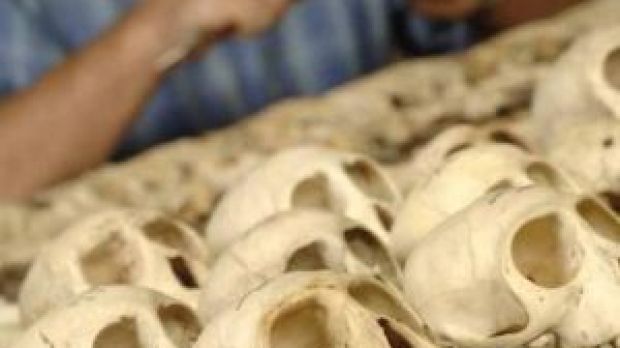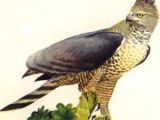After studying more than 600 bones from modern-day monkeys, researchers suspect that prehistoric carnivorous birds fed on our earliest ancestors. They collected the bones from nesting points of African crowned eagles (Stephanoaetus coronatus) in the Tai pluvial forest (Ivory Coast).
A full-grown African crowned eagle (image) weighs about 10 to 12 pounds, about the size of a golden eagle (Aquila chrysoaetus). "Punctures and scratches on many of the monkey skulls have led some researchers to rethink which animals may have preyed on our human ancestors", said W. Scott McGraw, the study's lead author and an associate professor of anthropology at Ohio State University.
"It seems that raptors have been a selective force in primate evolution for a long time," he said. "Before this study I thought that eagles wouldn't contribute that much to the mortality rate of primates in the forest. I couldn't have been more wrong."
These results may solve the mystery of the Taung child's death. The skull of the Taung child, an 3 ? years old offspring of Australopithecus africanus, was discovered in 1924 in a cave in South Africa. Australopithecus africanus was an ape-like early hominid who lived about 2.5 million years ago.
It was long thought that he had been killed by a cat, maybe a leopard. But McGraw said that marks on the monkey skulls from Tai closely resemble those on the skull of the Taung child. "Eagles leave very distinctive beak and talon punctures around the face and in the eye sockets," "The skull of the Taung child has these same kinds of puncture marks."
"The best way to learn about an eagle's prey is to gather the remains that are in or near the raptor's nest, says McGraw. "Eagles are ambush predators - they go in for the kill quickly," said McGraw, who has studied primates in Tai rainforest for 15 years.
"So the chance of actually seeing an eagle attack a monkey is extremely slim," he continued. "Yet raptors are kind enough to leave all the bones around afterwards. That means we can work backwards and construct a prey profile based on what's left over."
The monkey bones found near eagles' nests represented slightly more than half of the total number of animal bones. Most of the bones belonged to smaller monkey species, which weigh 2.5 to 11.5 pounds as adults. A third of the monkeys would weigh anywhere from 13.5 to 24 pounds, the majority being mangabeys (Cercocebus), the largest monkey in the Tai.
Mangabeys are primarily terrestrial, while all of the other monkey species are arboreal. The arboreal primates are easier to spot and attack. Also, mangabey is a rare monkey on Tai forest. "It appears that the crowned hawk eagle specifically targets these large, relatively rare monkeys," McGraw said.
"When we consider the density of the average mangabey population, the odds of an eagle encountering one of these monkeys should be small. But these mangabeys are turning up in nests more often than chance alone would predict."
This means that a modern-day crowned eagle could have successfully attacked a young hominid. It is suspected that the Taung child weighed around 26 pounds (12 kg).
"Many people thought that an eagle of this size wouldn't have enough strength to lift a primate the size of the Taung child," McGraw said. "That's a non-issue, because eagles don't hunt and process their kills that way. They typically dismember their prey very quickly, and then take pieces of the carcass back to the nest."
The collection consisted mostly of skulls and the long bones of the hind limbs, which can't be swallowed by the eagle and are decaying resistant. Most of the skulls were fractured or punctured from the force applied by the grip of an eagle's talons. Eye sockets and the base of the skulls were broken, either from beaks or talons in order to reach soft tissue.
"This fossil is probably the most written-about, studied and handled hominid skull ever," he said. "But almost no one had really bothered to look at skulls discarded from eagle nests. It's not that the damage was overlooked in the Taung skull, it's just that we didn't have the link to make sense of it."
"Those marks aren't from some large predatory cat, they're from an ancient crowned hawk eagle," McGraw said.
"The findings suggest that birds of prey have been one of the most important selective forces in primate evolution for a long time," he said. "There are other primate fossil collections around the world that may deserve a second look for evidence of wounds inflicted by raptors."
Photo credit: Jo Mc Culty, Ohio State University

 14 DAY TRIAL //
14 DAY TRIAL // 
